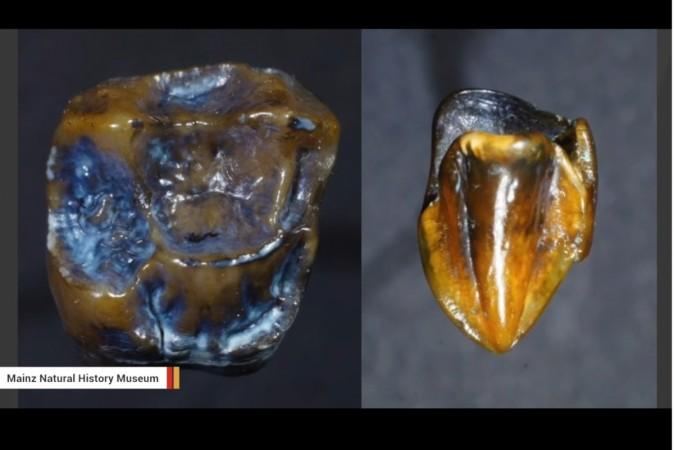
A team of German palaeontologists made an announcement recently that could rewrite the history of human evolution as we know it today. It was about discovering a pair of 9.7 million-year-old teeth!
ALSO READ: Conspiracy theorist discovers mysterious underwater pyramids near Florida using Google Earth
The pair of teeth belonged to the species of great ape and it was unearthed in September 2016 in Eppelsheim, Germany.
The team of researchers from Natural History Museum in Mainz led by Herbert Lutz, the deputy director of the museum, found these teeth fossils from a region where the river Rhine used to flow.
ALSO READ: SpaceX Falcon Heavy rocket to be launched this November; updates and all you need to know
The teeth discovered by archaeologist are not white anymore, they were amber and seemed to belong to an early ape-like human species called "Lucy" and "Ardi", which are the first examples of Australopithecus afarensis and Ardipithecus ramidus found in Ethiopia.
"The groundbreaking knowledge is that we have comparable finds only in East Africa. And these are much, much younger. These species are well known as Ardi and Lucy, and their canines look very similar to the one here from Eppelsheim, but they are only two, three, four or five-million-years-old, and Eppelsheim is almost 10 (million). So the question is: What has happened?" Lutz told Deutsche Welle.
ALSO READ: Space Debris: These are the countries on Earth with the most space junk
The newly found fossil dates back to 9.7 million years, which means it is around four million years older than the oldest skeletons discovered in Africa, which include the skeletons of Lucy and Ardi.
Lutz explained that similar species were in Africa, but the team is not sure about where exactly this ape species in Europe came from. No other species that have been discovered in Europe or Asia have any resemblance with the teeth. This point toward the fact that the teeth belongs to a species which is still undiscovered.
ALSO READ: Tipsy couple faces punishment for acting way too 'cheesy' and having sex at Domino's takeaway
"..we know of great ape fossils, but they all look much different. And so it's a great mystery," Lutz explained.
The archaeologists have been digging the site for almost 17 years as the area had the potential to lead to the finding of hominoid fossils. The pair of teeth was unearthed by them in 2016, in the last second when the researchers thought of stopping the digging, it was unexpected for the researchers, Lutz revealed.
Watch Video:

















